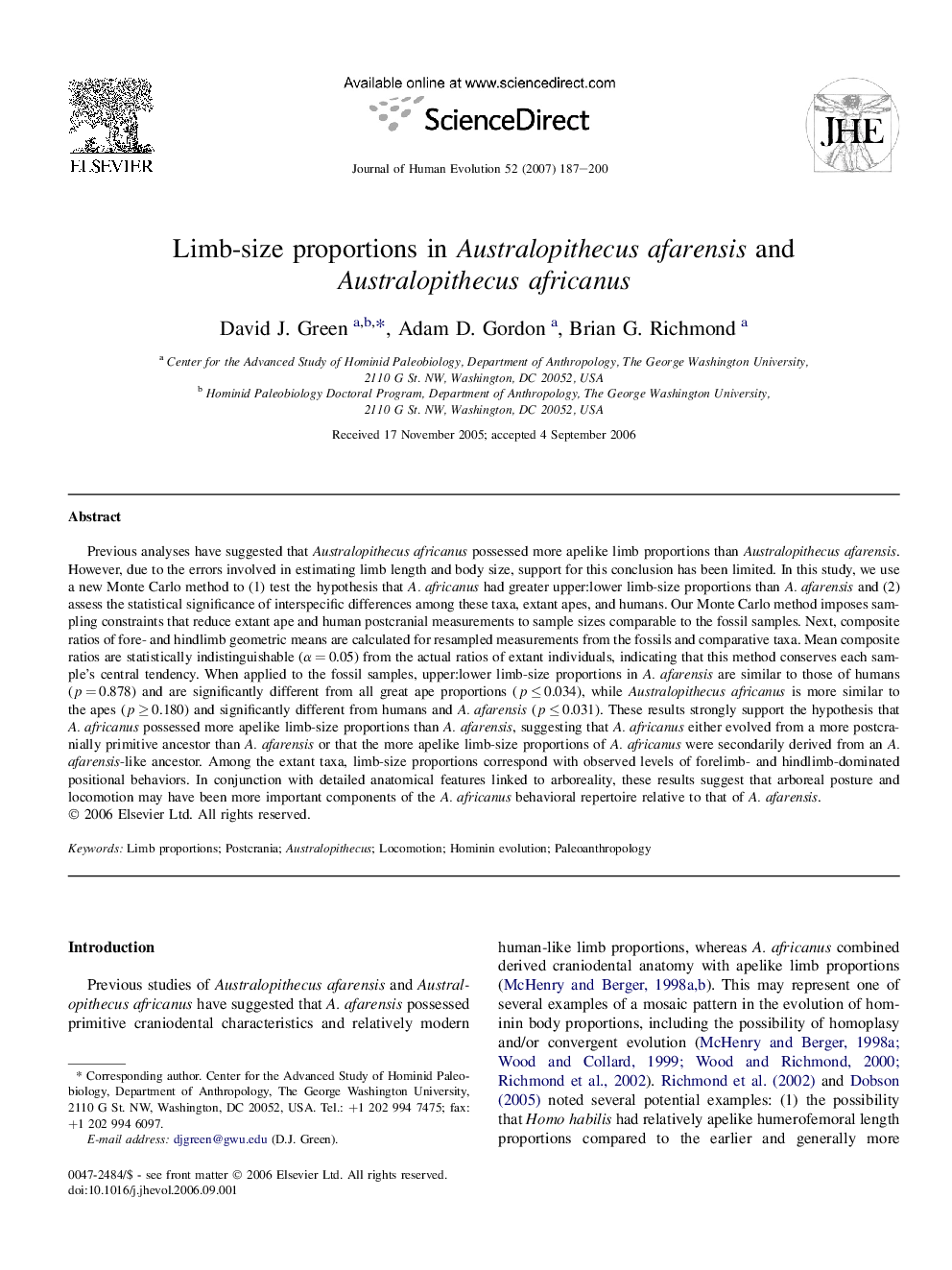| کد مقاله | کد نشریه | سال انتشار | مقاله انگلیسی | نسخه تمام متن |
|---|---|---|---|---|
| 4556899 | 1329511 | 2007 | 14 صفحه PDF | دانلود رایگان |

Previous analyses have suggested that Australopithecus africanus possessed more apelike limb proportions than Australopithecus afarensis. However, due to the errors involved in estimating limb length and body size, support for this conclusion has been limited. In this study, we use a new Monte Carlo method to (1) test the hypothesis that A. africanus had greater upper:lower limb-size proportions than A. afarensis and (2) assess the statistical significance of interspecific differences among these taxa, extant apes, and humans. Our Monte Carlo method imposes sampling constraints that reduce extant ape and human postcranial measurements to sample sizes comparable to the fossil samples. Next, composite ratios of fore- and hindlimb geometric means are calculated for resampled measurements from the fossils and comparative taxa. Mean composite ratios are statistically indistinguishable (α = 0.05) from the actual ratios of extant individuals, indicating that this method conserves each sample's central tendency. When applied to the fossil samples, upper:lower limb-size proportions in A. afarensis are similar to those of humans (p = 0.878) and are significantly different from all great ape proportions (p ≤ 0.034), while Australopithecus africanus is more similar to the apes (p ≥ 0.180) and significantly different from humans and A. afarensis (p ≤ 0.031). These results strongly support the hypothesis that A. africanus possessed more apelike limb-size proportions than A. afarensis, suggesting that A. africanus either evolved from a more postcranially primitive ancestor than A. afarensis or that the more apelike limb-size proportions of A. africanus were secondarily derived from an A. afarensis-like ancestor. Among the extant taxa, limb-size proportions correspond with observed levels of forelimb- and hindlimb-dominated positional behaviors. In conjunction with detailed anatomical features linked to arboreality, these results suggest that arboreal posture and locomotion may have been more important components of the A. africanus behavioral repertoire relative to that of A. afarensis.
Journal: Journal of Human Evolution - Volume 52, Issue 2, February 2007, Pages 187–200